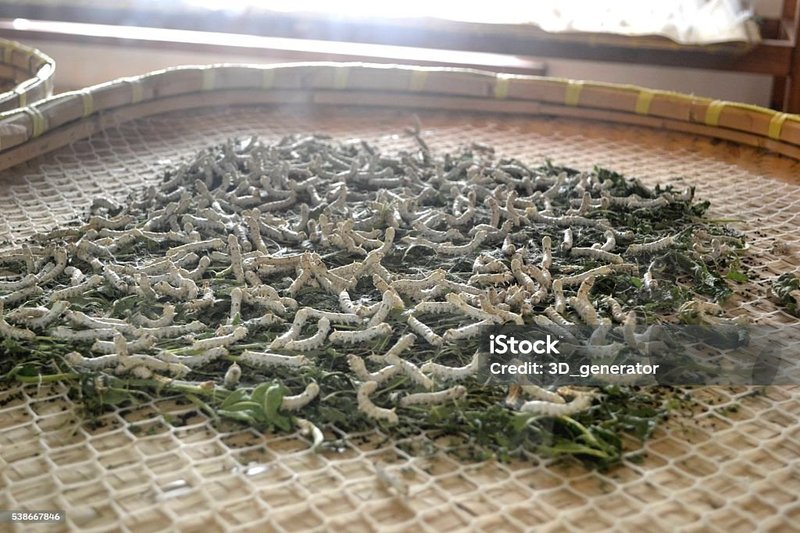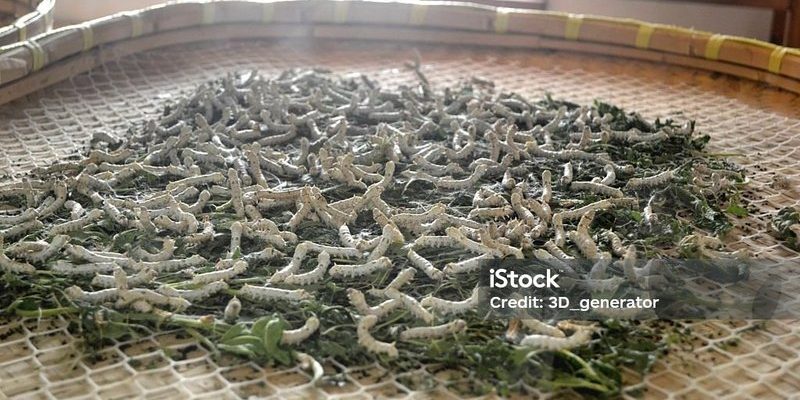
Think of silkworms as nature’s tiny protein factories. They can convert plant materials into nutritious protein with impressive efficiency. If you’re scratching your head wondering why we should consider silkworms for animal feed, keep reading. There’s a lot more to unpack about their benefits, sustainable practices, and how they could fit into the bigger picture of food production.
Understanding Silkworms: Nature’s Tiny Powerhouses
Silkworms, or *Bombyx mori*, are famous for producing silk, but they have a lot of nutritional value too. These caterpillars primarily feed on mulberry leaves, but what’s fascinating is their ability to transform these leaves into a nutrient-dense food source. When we talk about using silkworms in animal feed, it’s really about looking at their high protein content, essential amino acids, and healthy fats.
Research shows that dried silkworm larvae can contain up to 50% protein. That’s impressive compared to traditional feeds! They’re often touted as a sustainable alternative, which means they have a smaller environmental footprint. Using silkworms might just be the key to meeting growing protein demands while reducing the negative impacts of conventional livestock farming.
The Benefits of Using Silkworms in Animal Feed
So, why consider silkworms for animal feed? Here are a few standout benefits:
- High Protein Content: As mentioned, silkworms can contain about 50% protein, making them an excellent source for many animals.
- Sustainable Production: Silkworm farming requires less land and water than traditional livestock, helping to alleviate some environmental concerns.
- Rich Nutritional Profile: Beyond just protein, they also contain essential amino acids, vitamins, and minerals that are vital for animal health.
- Cost-Effective: The cost of producing silkworms is generally lower than that of conventional feed ingredients, which could lead to savings for livestock farmers.
Using silkworms in animal feed not only supports livestock health but also promotes more sustainable agriculture practices. This dual benefit is why many researchers are keen to explore this option further.
How Silkworms Compare to Traditional Feed Ingredients
When it comes to feed ingredients, you might find yourself asking how silkworms stack up against the usual suspects like soybean meal or fish meal. Here’s a quick breakdown:
– **Protein Content:** Silkworms pack a punch with their protein levels. While soybean meals typically hover around 40% protein, silkworms can take the lead with up to 50%.
– **Environmental Impact:** Traditional feed crops often require substantial resources—land, water, and fertilizers. In contrast, silkworms can thrive on food wastes and have a smaller environmental footprint.
– **Nutritional Value:** Silkworms provide a balanced amino acid profile, which benefits animal growth and reproduction. They can potentially reduce the need for additional supplements.
With these comparisons, it’s clear that silkworms offer a compelling alternative to conventional feed options, especially in a world that’s becoming more conscious of sustainability.
How Silkworms Are Processed for Feed
You might wonder how silkworms are transformed from their wriggly selves into something useful for animal feed. Here’s how it typically works:
1. **Cultivation**: Silkworms are raised in controlled environments where they can feed on mulberry leaves.
2. **Harvesting**: Once they reach maturity, they’re harvested, usually just before they transform into moths.
3. **Drying**: The larvae are then dried to preserve nutrients and extend shelf life. This process often takes place at low temperatures to prevent nutrient loss.
4. **Milling**: Finally, dried silkworms can be ground into a powder or meal, making them easy to incorporate into feed rations.
This processing not only makes them safe for consumption but also ensures they retain their high nutritional value, ensuring livestock can benefit from their unique properties.
Challenges and Considerations in Silkworm Feed Production
While the potential for using silkworms in animal feed is promising, it’s not without its challenges. Here are a few things to keep in mind:
– **Consumer Acceptance:** Many farmers and consumers may be hesitant to embrace insect-based feeds. Changing perceptions and educating stakeholders will be crucial.
– **Regulatory Hurdles:** The animal feed industry is heavily regulated, and introducing new feed sources like silkworms would require navigating various approval processes.
– **Market Demand:** While the demand for sustainably sourced protein is on the rise, ensuring there’s a stable market for silkworm feed is essential for producers.
The journey of integrating silkworms into the animal feed market is still unfolding, and addressing these challenges will be key to their success.
The Future of Silkworms in Animal Feed
Looking ahead, the future of silkworms in animal feed is bright, especially as the world seeks sustainable solutions for feeding a growing population. Innovative approaches, like incorporating silkworms into aquaculture or poultry diets, could enhance overall feed efficiency and animal health.
Research continues to explore the best ways to optimize silkworm farming and ensure that they can be a reliable feed source. It’s an exciting time for the animal feed industry, and those little critters might just hold the key to a more sustainable future.
Incorporating silkworms into animal feed might sound unusual, but the potential benefits are too significant to ignore. From high protein content to sustainable practices, these tiny insects could revolutionize how we think about livestock nutrition. By embracing innovative solutions, we can work toward a more efficient and eco-friendly food system.
So, the next time you think about animal feed, remember those tiny, spinning silk-makers. They’re more than just a curiosity; they might be an important part of the solution for feeding the world sustainably.

